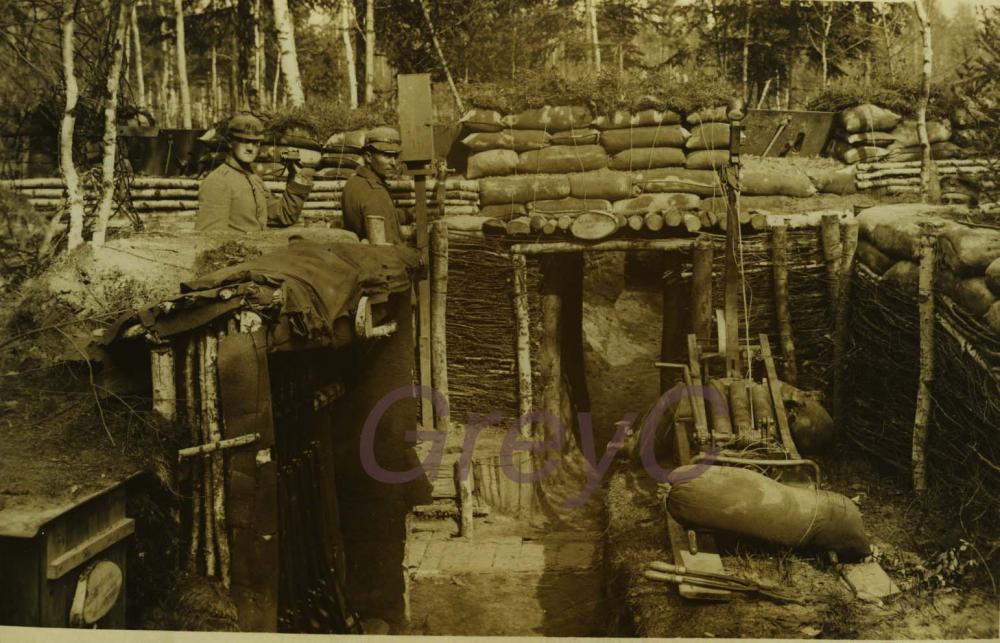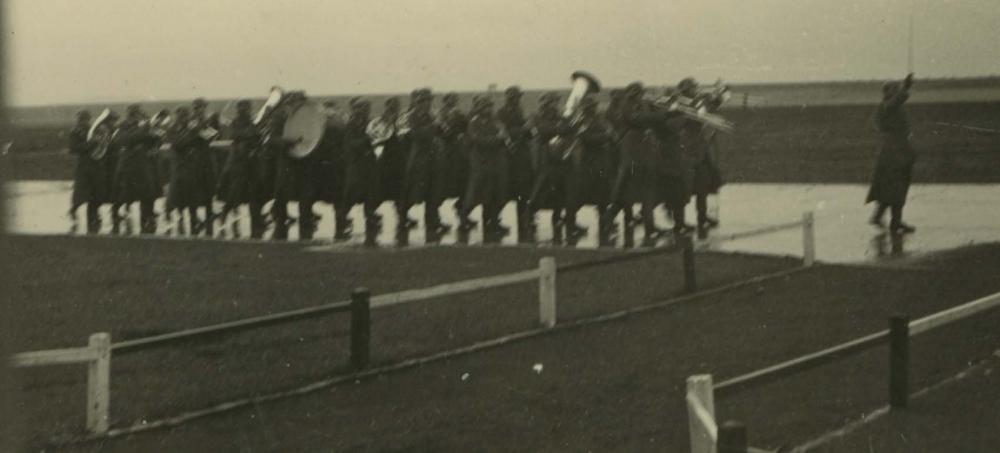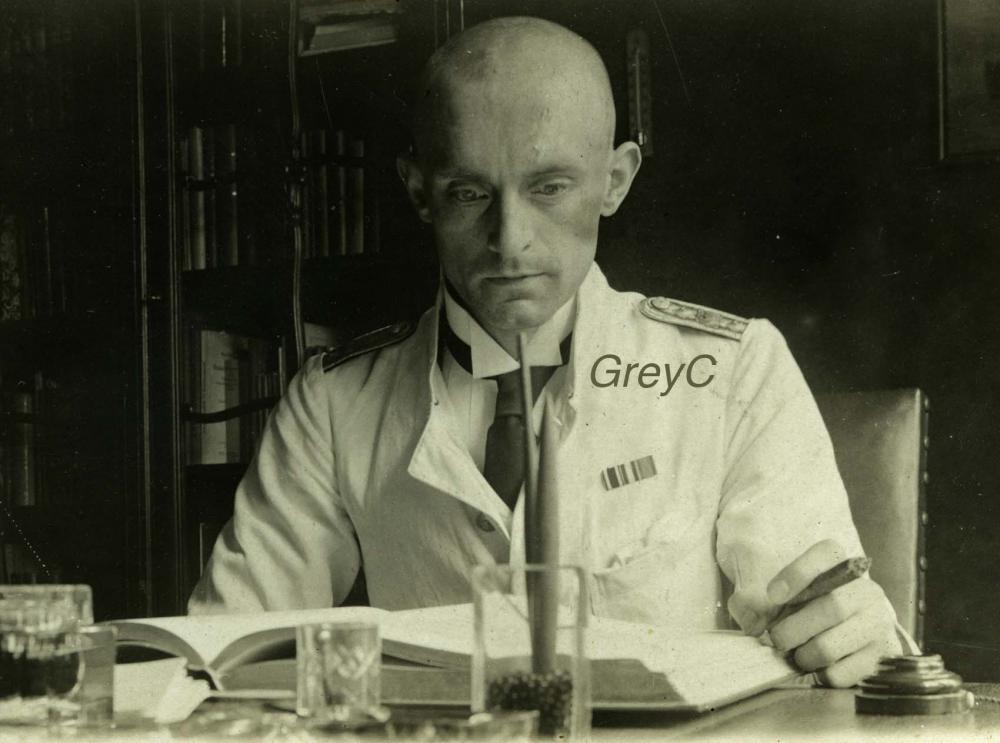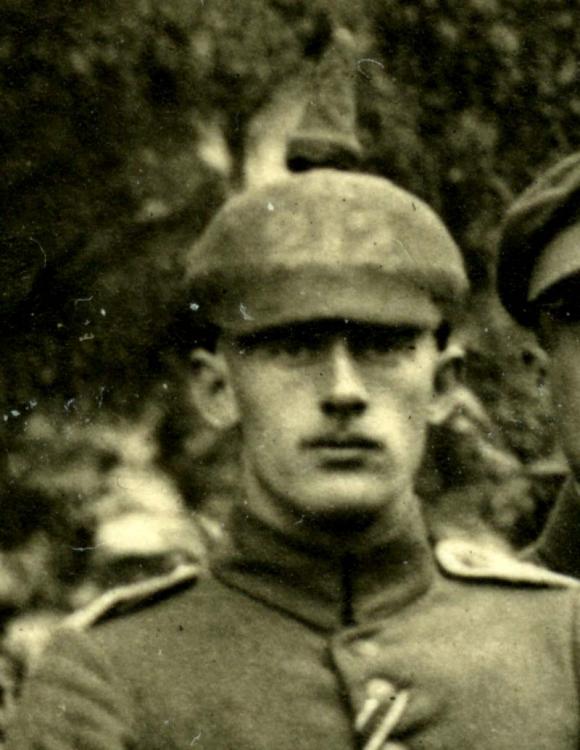-
Posts
923 -
Joined
-
Last visited
-
Days Won
6
Everything posted by GreyC
-
Hi, I also see a Schlesischer Adler 2nd class (2. Stufe) (4th from right), and 1st class (1. Stufe) beneath EKI which means he was active in a Freikorps for a while. Besides that Generalleutnant Eduard Lang, Generalmajor Otto Staubwasser and the yet to be identified Major all seem to share the same badge/emblem/medal, which is the highly reflecting rectangular one. Whereas the Generals wear it beneath their medalbars, the Major wears it next to his pinned on crosses above the belt. GreyC
-
Hi! Great room, thank´s for posting the picture and congrats for the neatly built drawers. GreyC
-
Hi, to me he is not Hessian but Württembergisch. See cockade and shoulder strap. It sports the "13" and is piped in red. That makes it Württembergisches Pionierbataillon 13. As this bataillon was also responsible to set up other units, which would therefore show same straps as "motherunit", he could also be in one of those different units. He himself is a Vizefeldwebel (Sergeantenknopf) or Feldwebel (book in cuffs). The medal could be the Silberne Militärverdienstmedaille von 1892. GreyC
-

Luftwaffe Luftwaffe Musikkorps
GreyC replied to Paul R's topic in Germany: Third Reich: Uniforms, Headwear, Insignia & Equipment
Hi, unfortunately not the best quality: The Musik Korps of the Airfield in Prenzlau, photo taken in 1934 on the occassion of a burial of a crashed pilot. GreyC -

Luftwaffe Luftwaffe Musikkorps
GreyC replied to Paul R's topic in Germany: Third Reich: Uniforms, Headwear, Insignia & Equipment
Hi, I don´t know if it is still of interest, if so: He was stationed at he Seefliegerhorst (for sea-planes) in Schleswig (city in Schleswig Holstein). They had a Musik-Korps there. In German you can read about the airfield here: https://de.wikipedia.org/wiki/Seefliegerhorst_Schleswig -

Uncategorised Unidentified WW2 Miscellaneous Signatures
GreyC replied to hucks216's topic in Germany: All Eras: Signature Database
Hi, post #7 könnte Koch sein. GreyC and I think it reads "Oberst" in #5, not Oberleutnant. GreyC -
Hi walfisch, glad the info is helpful. As far as the Ehrenrangliste is concerned, Irminbert is listed as Hauptmann a.D. in 1926, yet there is another vB. listed as Hptm. still active in the Reichswehr who seems to have served in IR 178. I am fairly certain that this was not Irminbert but some relative. GreyC
-
Hi arb, this seems to be him, although walfisch has him as FERDINAND Irminbert. Irminbert was severely wounded while with Schützenregiment / FR 108 (Schützenregiment=Füsilierregiment) as stated in the Verlustliste of 7th Oct. 1914 (left arm). So it makes sense that he then applied for the air-service after convalecence as he was probably no longer fit for the trenches. GreyC
-
Yup, The Ehrenrangliste lists three v. Biedermann´s at the start of the war as members of FR 108 (Saxon): Frh. v. Biedermann (Irminbert) Hptm. a.D. 1926 Frh. v. Biedermann (Kerfrid) Hptm. a.D. 1926 Frh. v. Biedermann (Lothar) OL. a.D. 1926 there was also a Hptm. v. B. listed at IR 178 Frh. v. Biedermann Hptm. who served with 10. IR. during the Weimar Republic, at least in 1926. You might find more infos on "your" guy in: Erich Blohm, Ernst Vogel, Gottfried Saupe: Das Kgl. Sächs. Schützen-Regiment „Prinz Georg“ Nr. 108. (Dresden 1926. Band 31 des sächs. Anteils der Erinnerungsblätter). GreyC
-
Hi, here is a Überweisungsnationale of a member of Sturmbataillon 8. https://www.the-saleroom.com/en-gb/auction-catalogues/berliner/catalogue-id-bahg10000/lot-44a679d2-654a-4aa3-a36c-a49d016c8095 GreyC PS: Überweisungsnationale is something like a copy of the Wehrpaß for the Bezirkskommando that the soldier was registered at after his service.
-
Hi, the Ehrenrangliste lists both officers as serving in the RFK throughout the war, both starting as Leutnant in 1914. Barchewitz listed as Hptm at end of war. Contrary to your statement, Kaehne is listed as Major a.D., if Kaehne ended the war as you stated as Hauptmann, he must have been listed in early Reichswehr Ranglisten which I do not own as the Ehrenrangliste was published in 1926. GreyC
-

Strange trench design. Aerial photo. Explanation?
GreyC replied to GreyC's topic in The Great War 1914 to 1918
Please keep posting, dear Peter! As we do not yet know why this photo was taken the altitude in which it was taken is not really telling without context. It is just a piece of the puzzle. GreyC






